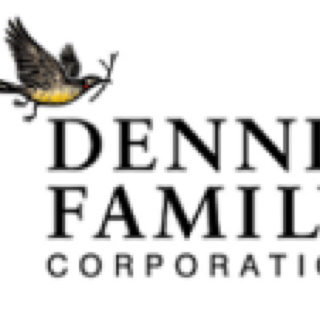Title Page
-
Document No.
-
WH&S Site Inspection
-
Client / Site
-
Conducted on
-
Prepared by
-
Location
-
Personnel
PUBLIC SAFETY AND WHS SIGNAGE
-
No public safety hazards are evident when entering the site - Low Risk (1)
-
Vehicle movement from site does not interfere with other road users - Medium Risk (3)
-
Site is adequately fenced and secure to prevent unauthorised - Medium Risk (3)
-
Site identification and safety signage is in place at site entrances - Low Risk (1)
-
Site office is provided and is clearly identified - Low Risk (1)
-
Emergency procedures in place with evacuation plan displayed - Low Risk (1)
ADMINISTRATIVE
-
Has a Site WHS Management Plan been produced for the site or current stages of construction - Low Risk (1)
-
Are visitors required to sign-in or be inducted to site and was a register available - Low Risk (1)
-
Are site induction records available for workers who were interviewed - Low Risk (1)
-
Are signed SWMS available for workers who were interviewed - Low Risk (1)
-
Have safety inspections been regularly conducted and are records available for inspection - Low Risk (1)
-
Are toolbox talks are being conducted with records available for inspection - Low Risk (1)
-
Incident/injury register current with records available for inspection - Low Risk (1)
-
Hazardous substances register available for inspection - Low Risk (1)
-
Material safety data sheets are available for inspection - Low Risk (1)
-
WHS policies, site rules and alerts are displayed - Low Risk (1)
AMENITIES
-
Are toilet facilities clean and adequate for the site - Low Risk (1)
-
Is a lunchroom or allocated area provided on site for workers - Low Risk (1)
-
Is clean drinking water available - Low Risk (1)
-
Is a first aid room or area available - Low Risk (1)
-
Is a first kit available which has been checked and restocked - Low Risk (1)
-
Is a nominated first aid officer available and are their details displayed on site - Low Risk (1)
-
Is a fire extinguisher available in the site compound and in mobile plant - Low Risk (1)
SITE CONDITIONS/HOUSEKEEPING
-
Are site conditions adequate (eg crushed rock provided where required) - Low Risk (1)
-
Is there clear access being maintained to amenities and electrical switchboards - Low Risk (1)
-
Is safe access and egress being maintained to each site and building under construction - Low Risk (1)
-
Are materials being stockpiled so as not creating a hazard - Low Risk (1)
-
Is the internal of homes under construction clean (eg tripping hazards controlled) - Low Risk (1)
ELECTRICAL SAFETY
-
Are overhead powerlines present and are these hazards adequately protected? - High Risk (5)
-
Is a spotter used when working near overhead powerlines and do they have evidence of competency - High Risk (5)
-
Is there adequate power available for the stage under construction - Low Risk (1)
-
Are temporary electrical switchboards secure and easily accessible - Medium Risk (3)
-
Electrical hazards being managed with RCD's fitted to all switchboards - Low Risk (1)
-
Are electrical leads, tools and equipment tested & tagged and in good condition - Low Risk (1)
-
Portable power boards are fitted with RCD protection. No domestic power boards being used? - Low Risk (1)
-
Leads and tools are not being used in damp or wet conditions - Medium Risk (3)
-
Are lead stands or hangers being used where required to minimise tripping hazards and prevent damage to leads - Low Risk (1)
-
Generators are construction compliant with RCD's fitted and earthed accordingly - Low Risk (1)
STRUCTURAL ADEQUACY AND STABILITY
-
Is temporary propping and structural stability of frames or structures adequate - High Risk (5)
-
Is brickwork or blockwork adequately braced or propped during construction - High Risk (5)
WORKING AT HEIGHTS
-
Are portable ladders industrial rated to 120kg and in good condition - Low Risk (1)
-
Is roof guard railing in place where required - High Risk (5)
-
Where ladders are being used to access roofs, are they tied off and secured - Medium Risk (3)
-
Is first floor edge protection in place prior to first floor level works proceeding - High Risk (5)
-
Are full height door and window openings protected by guardrail - High Risk (5)
-
Are balconies protected by guardrail or doors locked prior to permanent balustrading being installed - High Risk (5)
-
Are stair void platforms in place and remain in place until overhead works are completed and balustrading is installed in stairwells - High Risk (5)
-
Are lift shafts or penetrations adequately protected to prevent access - High Risk (5)
-
Are bricklayers trestles compliant with hardened pins used and working decks are fully planked - Medium Risk (3)
-
Where harnesses are used, is this in accordance with a safe system of work and is a rescue plan in place - High Risk (5)
-
Roofing contractor drop-zone barricaded with signage displayed to prevent access - Medium Risk (3)
-
Are hard hats being worn where there is a chance of workers being struck by falling objects - Medium Risk (3)
SCAFFOLDING
-
Are scaffolds compliant with a handover certificate displayed and safe access/egress provided - High Risk (5)
-
Are there two (2) separate means of access/egress for scaffolds with a top working deck of 8m high & length of 60 l/m (QLD) - Medium Risk (3)
-
Have gaps between the scaffold and building been eliminated over common areas & egress points (QLD) - Medium (3)
-
Has the ground conditions been prepared & advice been provided by the PCBU to the scaffolders (QLD) - Medium Risk (3)
MOBILE PLANT AND EQUIPMENT
-
Plant and equipment register is current and available for inspection - Low Risk (1)
-
Plant registration available for inspection where required - eg concrete pumps, mobile cranes, personnel hoists - Low Risk (1)
-
Plant operators qualified with evidence of competencies - Medium Risk (3)
-
Plant maintenance sticker or records available for inspection - Low Risk (1)
-
Has a daily pre-start safety check been completed for mobile plant - Low Risk (1)
-
Is a materials / personnel hoist in use which is safe and adequately tied back into the building - Medium Risk (3)
-
Where mobile cranes are in use on site, are they operating in accordance with SOP and relevant standards - High Risk (5)
-
Are concrete pumps and mobile cranes registered and checked prior to operation - Low Risk (1)
-
Mobile plant reverse beepers / lights operational - Medium Risk (3)
TRENCHING OPERATIONS
-
Trenches and other hazards (under 1.5m in depth) has webbing or flagging installed as protection (e.g. unless removed for work purposes) - Low Risk (1)
-
Trenches and excavation works (over 1.5m in depth) is battered, benched or has shields in place and is adequately protected - High Risk (5)
-
Where shields are being used in trenches are they safe and no rocks or spoil can fall inside the shield - High Risk (5)
-
Is access and escape routes considered safe from trenching operations - High Risk (5)
-
Ladders used to access trenches are industrial rated, in good condition & secure - Medium Risk (3)
-
Spoil and rocks located at a safe distance (minimum 1.5 metres) from trenching operations - High Risk (5)
-
Penetrations and pits covered and / or protected - High Risk (5)
TOOLS AND EQUIPMENT
-
Do all mixers, saws and grinders etc have guards fitted - Low Risk (1)
ENVIRONMENTAL
-
Environmental controls in place - Low Risk (1)
-
Hazardous goods/chemicals stored in secure ventilated area - Medium Risk (3)
-
Mud not being tracked off site onto external roads - Low Risk (1)
CONTRACTOR COMPLIANCE
-
Appropriate PPE being worn - Low Risk (1)
-
Hi Vis clothing being worn by workers when mobile plant is operating in the vicinity - Low Risk (1)
-
Suitable UV protection measures are in use - Low Risk (1)
OTHER HAZARDS
-
Reinforcing/starter bars and star pickets protected with caps - Low Risk (1)
-
Other identified items not listed - Low Risk (1)
-
Add signature









